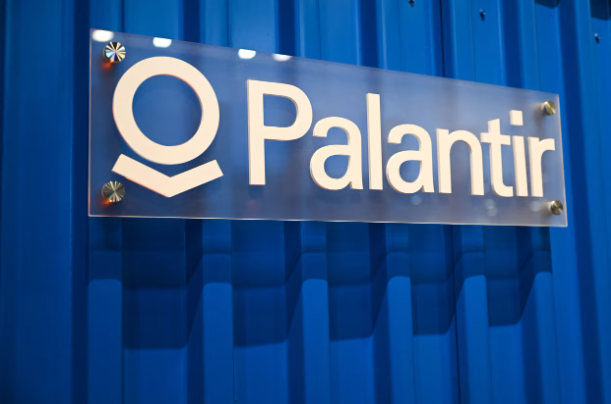Palantir delivered blockbuster quarterly earnings on Monday that topped analyst estimates and sent CEO Alex Karp’s trademark ebullience into overdrive, even if the company’s stock didn’t follow along for the ride.
PLTR
+3.35%
Palantir Technologies Inc. broke records once again with its third-quarter earnings as the company’s artificial-intelligence offerings drove aggressive business growth, but the stock fell in after-hours trading.
Palantir
PLTR
+3.35%
on Monday posted its best-ever results, reporting $1.18 billion in revenue and adjusted earnings of 21 cents per share for the quarter that ended Sept. 30. The results surpassed Wall Street expectations — analysts polled by FactSet had been anticipating $1.1 billion and 17 cents, respectively.
The company raised its full-year guidance as a result of its momentum. Palantir now anticipates around $4.40 billion in revenues for the 2025 fiscal year, up from the $4.14 billion to $4.15 billion the company had guided for in the second quarter.

Palantir
reported quarterly results that topped analysts’ estimates and issued better-than-expected guidance for the fourth quarter, attributing much of its strength to artificial intelligence.
The stock, which has soared 25-fold in the past three years, initially rose in extended trading before falling about 4%.
Here’s how the company did compared to LSEG estimates:
Earnings per share: 21 cents adjusted vs. 17 cents expected
Revenues: $1.18 billion vs. $1.09 billion expected
Palantir, which builds analytics tools for large companies and government agencies, said it expects revenue of about $1.33 billion for the current period, exceeding the $1.19 billion expected by analysts, according to LSEG.
The optimistic guidance comes even as the government shutdown stretches into its second calendar month, and potentially threatens some key contracts. Revenue in Palantir’s U.S. government business grew 52% in the quarter from a year ago to $486 million.
Government sales, particularly from military agencies, have been central to Palantir’s ongoing ascent.
Palantir has also faced criticism over how its tools are being used by government agencies, including U.S. Immigration and Customs Enforcement.
Total revenue in the quarter jumped 63% from $725.5 million a year ago, exceeding $1 billion for the second straight quarter. Net income more than tripled to $475.6 million, or 18 cents per share, from $143.5 million, or 6 cents per share, a year earlier.
For the full year, Palantir now expects about $4.4 billion in sales, topping the $4.17 billion forecast by Wall Street. The company also bumped up its full-year free cash flow outlook to between $1.9 billion and $2.1 billion.
Palantir’s U.S. commercial business more than doubled to $397 million. Total contract value for U.S. commercial deals closed more than quadrupled to $1.31 billion. Over the last few weeks, the company has announced new partnerships with Snowflake
, Lumen
and Nvidia
.
Retail investors have helped drive Palantir’s skyrocketing stock price to new heights. The shares have surged more than 170% this year, lifting the company’s market cap past $490 billion and cementing the company among the most valuable technology names in the world.
Analysts have raised concerns about the stock, which trades at an extreme multiple relative to technology behemoths with far more revenue. In a letter to shareholders, CEO Alex Karp called out the “detractors” who have been “left in a kind of deranged and self-destructive befuddlement.”
“The reality is that Palantir has made it possible for retail investors to achieve rates of return previously limited to the most successful venture capitalists in Palo Alto,” he wrote. “And we have done so through authentic and substantive growth.”
“These numbers validate we were right. Please learn from us. That’s what these numbers mean,” Karp told Fortune in the interview.
“These are not normal results. These are not even strong results,” Karp continued later on Monday, during the company’s earnings call. “These aren’t extraordinary results. These are arguably the best results that any software company has ever delivered.”
The company’s $476 million in net income, was up 40 percent year-over-year.
In general, 40% is considered strong performance. This quarter, Palantir’s “Rule of Forty” was 114%, even higher than its last quarter, which was 94%.
Palantir’s revenue figures are still quite small compared to peers of similar market capitalization. And the company’s rich valuation has stoked skepticism among some investors worried about an AI bubble.
“Let me say something slightly political,” Karp said. “And I’m not saying other people agree with this, but when people are attacking our soldiers for stopping fentanyl from coming into this country, I want people to remember if fentanyl was killing 60,000 Yale grads instead of 60,000 working class people, we’d be dropping a nuclear bomb on whoever was sending it from South America.”</p>
Karp’s shareholder letter from this quarter—his fifteenth musing to shareholders and Palantir enthusiasts—was also biting.
The stock initially climbed 7% in Monday’s extended session, but soon gave up those gains, and ended down 4.3%.
“As we have seen thus far this earnings season, earnings beats aren’t necessarily being rewarded owing to extended positioning.
Jake Behan, head of capital markets at Direxion, said in a note. “At this valuation, even great numbers don’t move the needle. The bar is sky high and not an easy one to clear, even for Palantir.”
Meanwhile, Palantir’s Artificial Intelligence Platform, or AIP, continues to see strong demand. Taylor said that’s because it’s “the only platform delivering transformational impact in this market.”
Only 24% of the analysts covering Palantir polled by FactSet assign the stock a buy or buy-equivalent rating.
The company’s earnings beat sends a strong message of continuing demand for Palantir’s products.

